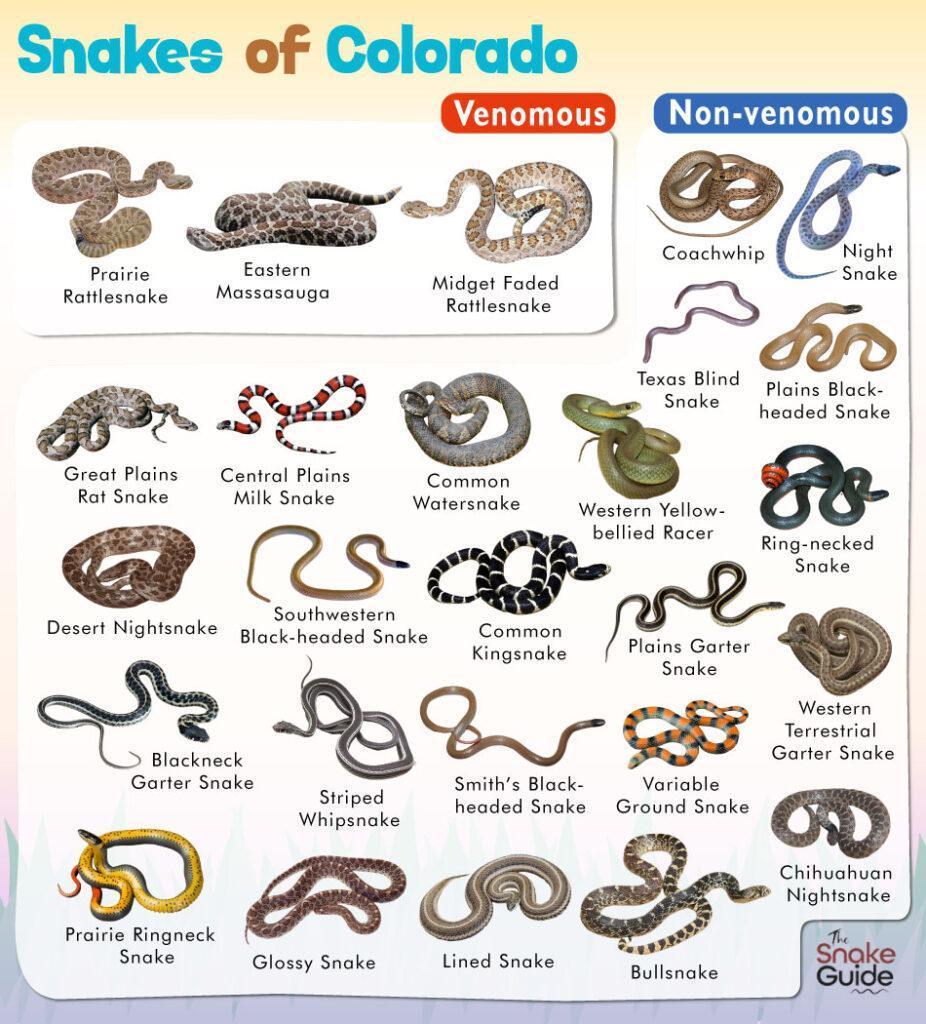Snakes in Colorado
Colorado is geographically diverse, with grasslands or prairies in the eastern part, deserts and shrub lands in the western region, and mountainous terrain from north to south and the center.
Hence, it is evident that the state has a fair number of snake populations, around 40, with just three venomous species. The venomous species mainly inhabit the prairies, shrublands, grasslands, and forest areas.
The snakes of Colorado mostly hibernate through the winter months. As per the Colorado Parks and Wildlife records, rattlesnakes hibernate between October 20 and March 20.
The Bullsnake, measuring 88 inches, is Colorado’s largest, while the blind snake is the state’s smallest.
| Group | Venomous | Non-venomous |
|---|---|---|
| Rattlesnakes | Prairie Rattlesnake Midget Rattlesnake | – |
| Pit Vipers | Western Massasauga | – |
| Garter Snakes | – | Plains Garter Snake Blackneck Garter Snake Common Garter Snake Western Terrestrial Garter Snake Western Ribbon Snake |
| Whip Snakes | – | Striped Whipsnake Coachwhip |
| Hognose Snakes | – | Western Hognose Snake |
| Water Snakes | – | Common Watersnake |
| Kingsnakes | – | Common Kingsnake Central Plains Milk Snake |
| Ground Snakes | – | Variable Ground Snake |
| Rat Snakes | – | Great Plains Rat Snake |
| Diadophis | – | Ring-necked Snake Prairie Ringneck Snake |
| Opheodrys | – | Smooth Green Snake |
| Hypsiglena | – | Night Snake Desert Nightsnake Chihuahuan Nightsnake |
| Rhinocheilus | – | Long-nosed Snake |
| Tantilla | – | Plains Black-headed Snake Southwestern Black-headed Snake Smith’s Black-headed Snake |
| Arizona | – | Glossy Snake |
| Rena | – | Texas Blindsnake |
| Tropidoclonion | Lined Snake | |
| Pituophis | Bull Snake Great Basin Gophersnake | |
| Coluber | – | Eastern-bellied Yellow Racer Western-bellied Yellow Racer |
| Leptotyphlops | – | New Mexico Thread Snake |
Snakes by Colors and Patterns
Black Snakes: Plains Black-headed Snake, Blackneck Garter Snake, Southwestern Black-headed Snake
Green Snakes: Smooth Green Snake
Quick Information
Biggest Snakes: Bullsnake
Smallest Snakes: Texas Blindsnake


